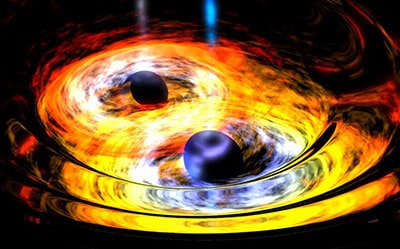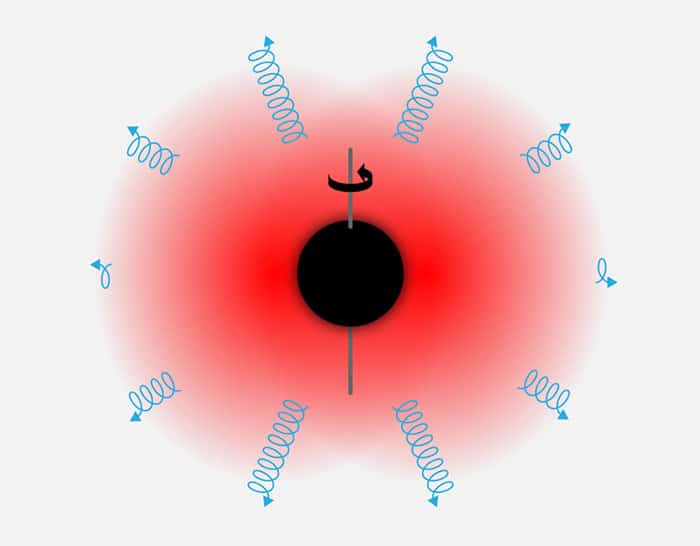
The no-hair theorem, which says that black holes only have three defining properties, has been tested in a new analysis of the first-ever gravitational waves to be detected.
Maximiliano Isi at the Massachusetts Institute of Technology and colleagues in New York and California looked at the “ringdown” signal from the GW150914 merger of two black holes and have shown that it is consistent with the theorem.
The no-hair theorem is the statement that a black hole is characterized by only three observable properties – its mass, angular momentum and electrical charge. “No hair” refers to the resemblance of a black hole to a bald head with few defining features. While the theorem has no rigorous mathematical proof, it is in line with general relativity and therefore widely accepted.
Information paradox
The theorem is also at the centre of an important paradox of modern physics regarding whether information is destroyed when something is sucked into a black hole. The no-hair theorem suggests that information must be destroyed, whereas quantum theory says otherwise. As a result, understanding whether the no-hair theorem is correct has important implications beyond black holes.
This latest test of the theorem uses data from September 2015, when the LIGO gravitational-wave detectors observed a signal from two black holes orbiting each other in a binary system some 1.3 billion light-years away. Astronomers watched as the objects got closer and closer together until they coalesced into a single black hole with a mass of about 62 Suns.
Ring tones
At first, the resulting black hole is distorted and undergoes a rapid relaxation over a few milliseconds to a more symmetrical state. The distorted black hole has a natural set of oscillatory modes – much like the tones of a bell – and the relaxation involves the emission of gravitational waves at the frequencies of these modes in a process called ringdown.
The exact nature of the ringdown process is defined by the physical properties of the black hole – and therefore the frequencies should be consistent with those predicted by general relativity and the no-hair theorem.

Spinning black holes could grow long hair
Isi and colleagues found that the ringdown signal can be described in terms of the fundamental mode of the black hole plus at least one overtone. This, they say, is consistent with the hypothesis that the GW150914 merger created a “Kerr black hole” – which is a black hole with zero electrical charge. Furthermore, the analysis is consistent with a black hole that is characterized by the no-hair theorem
The LIGO (and Virgo) gravitational detectors have been upgraded since the detection of GW150914 and ringdown signals taken at improved detector sensitivities should provide a better indication of the validity of the no-hair theorem. Ringdown data could also help astronomers identify exotic astrophysical objects that could mimic black holes.
The research is described in Physical Review Letters.



